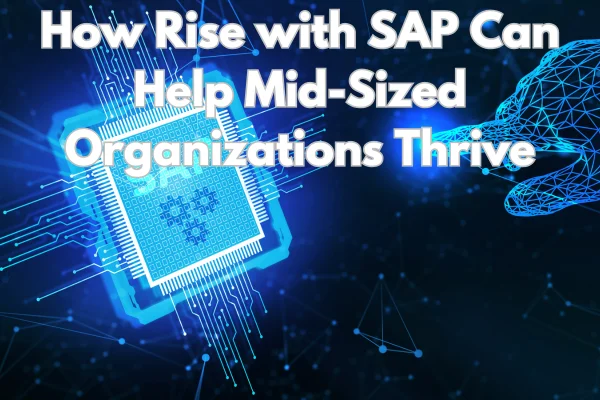
In the evolving landscape of IT service delivery, businesses face a critical decision: whether to manage their Application Management Services (AMS) through a captive IT model or to outsource them to a third party. Both approaches have their merits, but captive IT services often emerge as the preferred choice for organizations that prioritize control, customization, and long-term value.
This article explores the advantages of captive IT services compared to outsourcing AMS, providing insights into why many organizations lean towards the captive model.
1. Enhanced Control and Governance
Captive IT Service
In a captive IT model, the organization directly owns and manages the IT operations. This gives businesses full control over AMS processes, including monitoring performance, enforcing compliance, and customizing workflows.
Decision-making is more agile, as there is no dependency on an external partner for approvals or process modifications.
Captive centers ensure data sovereignty, a critical factor for industries like finance, healthcare, and government sectors.
Outsourcing AMS
With outsourcing, governance is typically shared with or entirely managed by the third-party vendor.
While Service Level Agreements (SLAs) provide oversight, there is often a gap between expectations and execution due to varying priorities between the client and the vendor.
Reduced control over sensitive data can lead to compliance risks.
Advantage: Captive IT services provide unmatched control, enabling tighter alignment with business objectives.
2. Cost Efficiency in the Long Term
Captive IT Service
While the initial setup cost for a captive IT center may be high, the long-term operational costs tend to stabilize.
Captive centers allow companies to leverage economies of scale, especially for large organizations with significant IT needs.
Organizations can avoid vendor margin costs and build internal capabilities that drive efficiency over time.
Outsourcing AMS
Outsourcing appears cost-effective initially, but hidden costs (e.g., change requests, and vendor lock-in) can inflate expenses.
Organizations often face challenges in renegotiating contracts and managing unexpected project extensions.
Advantage: Captive IT centers offer better cost predictability and reduced dependency on external pricing structures.
3. Alignment with Business Goals
Captive IT Service
Captive IT teams operate as an integral part of the organization, which fosters a deep understanding of the company’s objectives, culture, and industry-specific needs.
Custom AMS strategies can be developed without the constraints of a vendor’s standard operating procedures.
Internal teams are more likely to adopt a long-term perspective, focusing on innovation and continuous improvement.
Outsourcing AMS
External vendors may lack an in-depth understanding of the client’s business, leading to generic solutions.
Vendors typically prioritize contract deliverables over strategic alignment, which can limit the potential for innovation.
Advantage: Captive IT teams align more effectively with organizational goals and values.
4. Superior Talent Management
Captive IT Service
Captive centers allow organizations to recruit, train, and retain top talent, ensuring that their AMS operations benefit from a skilled and motivated workforce.
By owning the talent development process, businesses can create specialized teams tailored to their AMS needs.
Employee loyalty tends to be higher in captive setups, as team members feel a stronger connection to the organization.
Outsourcing AMS
Outsourced AMS providers rely on their internal pools of talent, which may not always match the specific skill sets or expertise required.
High turnover rates in the outsourcing industry can lead to frequent disruptions in service quality.
Advantage: Captive IT models empower businesses to build dedicated, high-performing teams.
5. Data Security and Compliance
Captive IT Service
For organizations dealing with sensitive customer data or operating in highly regulated industries, a captive IT model offers greater data security and regulatory compliance.
By keeping AMS operations in-house, businesses can enforce strict access controls and ensure compliance with standards such as GDPR, HIPAA, or SOX.
Outsourcing AMS
Despite vendor assurances, data breaches and compliance violations are common risks in outsourcing.
The reliance on a third party introduces potential vulnerabilities, especially when vendors operate in jurisdictions with differing regulatory standards.
Advantage: Captive IT centers provide a more secure and compliant environment for AMS operations.
6. Scalability and Agility
Captive IT Service
Captive models enable businesses to scale their AMS operations in response to evolving needs without the constraints of pre-defined vendor agreements.
Teams can quickly adopt new technologies or processes, ensuring that AMS strategies remain agile in a dynamic business environment.
Outsourcing AMS
Scaling outsourced AMS services often involves renegotiating contracts or incurring additional costs, which can slow down responsiveness.
Vendors may prioritize larger clients or contracts, delaying service delivery for smaller needs.
Advantage: Captive IT services offer greater flexibility for scaling and adapting to change.
Conclusion
While outsourcing AMS has its advantages, particularly for organizations seeking quick deployment or cost savings in the short term, the captive IT model stands out for businesses that prioritize control, customization, and long-term value. By leveraging captive centers, organizations can align IT services with strategic goals, maintain data security, and build specialized talent—all while achieving cost efficiencies over time.
For organizations seeking a competitive edge in today’s digital landscape, investing in a captive IT model for AMS is a decision that ensures sustained operational excellence and strategic alignment.

 English
English














